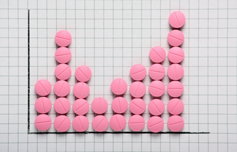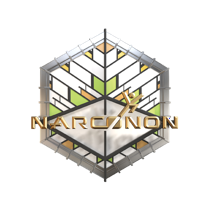Oklahoma Turning to Legislation to Help Fight Prescription Drug Abuse

The Oklahoma House of Representatives voted on a bill recently that would essentially be the first step toward curbing the state’s prescription drug abuse problem. The bill, promoted by Governor Mary Fallin, seeks to limit the over-prescription of three types of extremely addictive pain killers. If passed, it would require doctors to check a state-wide database before writing a prescription. The purpose of the law is to verify that another prescription has not already been written for the same drug by another doctor.
Prescription drug abuse is definitely a problem in Oklahoma. According to The Oklahoman Editorial Board, 9.7 million prescriptions were written in the last year alone, which averages out to 50 pills for every person in the state! The federal government reported that Oklahoma had the highest rate of prescription drug abuse of any state in the country. The cost of addiction to both street and prescription drugs in Oklahoma is more than the entire state budget combined.
This bill was originally introduced last year, but was stopped by some doctors who felt that checking the database each time they prescribe one of these addictive drugs would take too much of their time. A compromise was reached in which doctors must check the database at the time of the initial prescription, and then at least every six months after that.

Oklahoma isn’t the only state struggling with a prescription drug abuse epidemic. The National Institute on Drug Abuse provides the following facts and statistics on their website regarding this nation-wide problem:
- Though only 5% of the world’s population, citizens of the United States consume 75% of the prescription drugs used in the world.
- There are over 51 million people who admit to using prescription drugs for non-medical purposes at least once in their life.
- There are 6.1 million people who admit to using prescription drugs for non-medical purposes in the past year.
- In 2010, there were so many painkillers prescribed by doctors that the entire adult population of the United States could pop a pill every four hours for an entire month.
There are more disturbing facts just like these. The list goes on and on. It is clear that prescription drugs are a problem in this country. It can’t just be that we get hurt exponentially more than other countries and need that many more pills to dull the pain. Something must be done about this epidemic. A law like the one passed in Oklahoma, though far from perfect, is a good place to start.
Many other states are turning to legislation to address various aspects of the prescription drug abuse problem. In fact, 34 states introduced legislation in 2014 to prevent overdoses of prescription drugs. 33 states introduced legislation aimed at stopping non-medical abuse of these drugs. Hundreds of bills were introduced in state legislatures all over America in the last year alone.
How Widespread is Prescription Drug Abuse
Prescription drug abuse is one of the fastest-growing drug abuse problems in the country. More people die from prescription drug overdoses than from heroin, meth, and cocaine combined. There is a perception that because prescription drugs come from a doctor they are safe to consume. They can be cheaper than street drugs and they’re legal, so if caught with a prescription drug an addict can simply claim that it was prescribed to him. Prescription drugs are also easier to come by than many street drugs. Most addicts get started by raiding their parent’s medicine cabinet.
Abuse of prescription drugs is dangerous. A drug, when prescribed by a doctor, is specifically designed to handle a problem in that person’s body. Its dosage is proportional to that person’s weight. Many drugs can have harmful interactions. The person to whom the drug was prescribed will have been warned about combining it with other drugs or with alcohol. It is doubtful whether an addict will pay close attention to which drugs should not be taken together. The results can be detrimental, if not fatal.
There are four main categories of prescription drugs that are abused most frequently. Painkillers such as OxyContin and morphine are used because they are similar to heroin in power and effect. Abuse of painkillers leads to unconsciousness, nausea and other effects. Prescription painkillers can easily become addictive.
Stimulants are drugs that increase a person’s heart rate and energy level. Prescription stimulants such as Ritalin or Adderall are similar to drugs like cocaine in their effect upon the human body. Abuse of prescription stimulants causes feelings of anger and paranoia, along with an increased heartbeat.
Drugs like Prozac and Paxil are prescription antidepressants. They can cause a whole host of mental problems such as paranoia, suicidal thoughts, and hallucinations. Abuse of these drugs can lead to addiction.
The fourth category is a type of drug called a depressant. Common depressants include Xanax and Librium. Depressants slow down a person’s brain function and are used as sedatives or prescribed to people struggling with mental problems. Abusers of depressants experience a slowed pulse, low blood pressure, lack of energy, and depression, among many other side effects. Addiction is likely when abusing prescription depressants.
Drug abuse of any kind, prescription or otherwise, leads to a dwindling spiral in which no one wins and the addict and his family and friends find themselves trapped in a situation that can seem hopeless. The addict often does not recognize that there is a problem, no matter how evident it is to their loved ones. Drugs can cause a personality shift. Someone who was once trustworthy and kind can become dishonest and cruel. An addict will do anything to get their next fix, including stealing from a parent or friend or intentionally alienating people who used to be close so that they can be left alone to pursue their drug-seeking behaviors.
How Do We Check This Growing Epidemic
The solution to the prescription drug abuse epidemic includes the passage of laws like the one voted on by the Oklahoma House of Representatives. It is a first step toward curbing the over-prescription of addictive drugs. It will limit their availability. The number one source of prescription drugs used for non-medical purposes is a free “sample” from a friend or family member. If fewer drugs are prescribed, fewer will be available to give away. With the new law in place, a doctor will be able to ascertain whether a person is simply attempting to obtain more drugs, or if they have a legitimate medical situation. By searching the state-wide data base, a patient’s prescription history will be made readily available. If a doctor knows that a patient already has a highly addictive drug prescribed to them by another medical doctor, the chances of receiving a second prescription are greatly reduced.
Another aspect of the solution to the prescription drug abuse epidemic is early education in the dangers of abusing any type of drug. Children and young adults need to know that unless a drug was specifically prescribed to them, it is unsafe to take. They also need to know that taking a prescription drug in any way other than listed on the label is dangerous and potentially life-threatening. According to the Centers for Disease Control and Prevention, prescription drugs are now the leading cause of injury deaths in the United States. More than half of all drug-related emergency room visits were caused by prescription drugs, not street drugs. Every year, over 43,000 people in this country die because of these supposedly “safe” drugs.
Treatment for prescription drug addiction is available and can break the cycle of abuse. If you know of someone who is suffering from addiction, help them by finding an effective drug rehabilitation center. You may just save their life.


